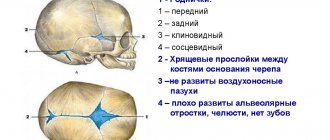The birth of a child is not only the happiest and most memorable moment in the life of new parents, but also a point of no return, which most radically changes the usual lifestyle of a couple in love. When a baby appears in the family, mom and dad have to study completely new topics in detail and understand issues that they did not even suspect existed.
Baby carriers and the rules for their use are one of the most popular and discussed topics among those parents whose child has only recently been born. Newly-made mothers and fathers are concerned not only with how to properly carry a child in a sling and how to choose the ideal physiological baby carrier in which the baby will be in the correct position and feel comfortable and completely safe, but also at what age can a child be carried in a sling . The answer to this question is very important: if you carry your baby in a carrier that is not suitable for his age, then sooner or later the baby will have serious health problems in the form of hip dysplasia, an incorrectly formed spine, etc.
At what age can you carry your baby in a sling? In this article we will discuss this issue and consider the features of sling scarves, LoveTay slings, May-slings, AIR X ergo-backpacks, ONE+ ergo-backpacks and hipsits.
At what age can you carry a baby in a sling?
Many parents who started carrying their baby in a sling at two, three or four months only regret that they discovered this miracle carrier too late, which allows them to continue to lead an active lifestyle without being separated from their baby for a minute. deal with current affairs. Why do parents love slings so much?
This is not surprising, because thanks to the sling, close physical contact is established between the child and the adult.
☑ Feeling the warmth of the parent, the baby is much less capricious, nervous and cries, falls asleep faster and wakes up less often.
☑ The sling is ideal for breastfeeding and helps the baby adapt to the reality around him much easier and faster.
☑ In a sling, the baby is much less likely to suffer from colic, which most often appears from 3 to 12 weeks after birth.
You can carry a baby in a sling from the first days of life. But the sling must meet all the requirements for it, since not every model is suitable for carrying a recently born baby.
Some experts compare the first 3-4 months of a baby’s life with the fourth trimester of pregnancy. Why? The fact is that the baby who is born will have to go through a rather difficult process of adaptation to existence outside the mother’s womb. Parents not only need to help the baby get used to the world around him, but also learn to recognize his crying, satisfy emerging needs, establish breastfeeding, etc.
Since the baby does not yet know how to hold his head up on his own, the sling must provide proper and reliable support for his neck, head and back.
✚ The ideal sling for a newborn, as well as a sling for a month-old baby, is a knitted sling-scarf, woven sling-scarf and LoveTay sling.
✚ From the first days of life, the baby can be carried in the ONE+ ergo-backpack, which was created specifically for newborns.
Is it possible to carry a baby vertically in a sling? Yes, in these slings the baby can be carried from the first days of life not only in a horizontal, but also in a vertical position.
To carry a child vertically in a sling, parents only need to master the simple “Cross over Pocket” winding that does not require special knowledge.
Slings: benefits and harms
Most doctors, discussing the pros and cons of slings, agree: the benefits of their use are enormous; if used correctly, they do not harm either newborns or older children. A child up to 20 kg can be carried in a sling.
The main positive aspects of babywearing include:
- close contact with the mother: heartbeat, breathing, walking rhythm - all this is familiar to the child and has a calming effect on him;
- gentle and harmless adaptation to the outside world;
- better psycho-emotional development - children raised in a sling are more sociable and balanced, learn better;
- elimination or relief of colic.
Additionally, the wide hip position is an excellent way to prevent hip dysplasia. For example, in African and Asian countries, where slings are used very actively, this pathology is extremely rare.
A sling can only cause harm if used incorrectly. As a rule, this is an incorrect formation of the spine, scoliosis and osteochondrosis. To avoid such troubles, use the services of babywearing consultants. They will help you choose the right model, tell you in detail about the pros and cons of a sling for newborns and older children, and teach you how to use it correctly.
Types of slings
The most popular are three main models:
- sling scarf;
- ring sling;
- May-sling.
A sling scarf is a piece of fabric 3 to 6 meters long. The width of the product is 50–70 cm. By wrapping it in a special way around the body, the mother creates a “pocket” in which the child is placed. The obvious advantage of this type of sling is its versatility. You can carry your baby in it from birth to 4 years. The sling scarf evenly distributes the load on the stomach, hips, and shoulders, relieving the spine. Using different methods of dressing, the child can be placed horizontally and vertically, positioning him in front, side, back. Securely secured with several layers of fabric, the baby will feel comfortable and safe.
The only drawback of a sling scarf is that it requires experience to fully use it. However, sling consultants will be happy to help you overcome this barrier.
In addition, in the summer a baby may feel hot in a sling-scarf, so the choice of clothes for a child during this period must be approached with special care.
In a ring sling, the fabric is pulled through two rings to form a “pocket.” This makes it possible to adjust its length and securely fix the child. Like the previous variety, it is suitable for children from birth to 4 years. A ring sling is easier to use than a scarf.
A sling with rings is worn on one shoulder, and this is its main disadvantage: due to the uneven load, the mother gets tired quickly. It is also inferior to a sling-scarf in terms of safety - a very large child can fall out of it.
A May Sling is a rectangular piece of fabric with straps sewn into the sides. They are tied around the body, placing the child in a “pocket” formed by the back. Despite the fact that the May-sling has a number of advantages - it is very easy to use, the child does not feel hot in it, and can be used for carrying large babies - it also has disadvantages. In particular, it is recommended to be used for carrying children who hold their heads up, and even better for those who are already sitting confidently. This sling can cause harm to a newborn baby - his spine in an upright position experiences excessive stress.
Which slings and ergo-backpacks are suitable for two-month, four-month and six-month babies?
2 months
At two months, the baby stops tucking his legs up, since by this time the congenital tone in the legs usually disappears. Despite this, the child must be carried so that he is in the correct physiological position - M-position . Only this position contributes to the correct formation of the hip joints, which continue to actively develop.
Starting from two months, the child can be carried not only in the slings recommended from the first days of life, but also in the May-sling.
4 months
The baby is actively growing: every day he becomes more mobile and heavier. Many parents are starting to feel the need for a quick-on, quick-on baby carrier.
Although the child does not yet know how to sit, he can already actively roll over and, lying on his tummy, hold his torso on his outstretched arms. Starting from 4 months, the baby can already be carried in the AIR X ergo-backpack.
6 months
A six-month-old child can already sit independently. The time that the baby spends in the arms of his father or mother is gradually decreasing.
You can continue to carry your child in the previously purchased AIR X ergo-backpack. A hipsit will also be an excellent option for carrying an older baby.
Features of knitted and woven sling scarves
Knitted and woven sling scarves are suitable for carrying babies from the first days of life weighing from 3.5 to 12 kg. The length of the sling scarf is 4.5 m, so this type of baby carrier is suitable for an adult with clothing sizes XS, S, M and L. The shoulder straps on the parent’s back are placed crosswise.
☑ Both woven and knitted sling scarf reliably and softly supports the baby's neck, head and back. He grows with the child.
☑ A sling scarf does not require special knowledge or skills from adults. An adult only needs to learn one easy winding - “Cross under the pocket.” The baby fits into the ready-made wrap, which makes the sling scarf an even safer and more reliable baby carrier.
The position of the child in the sling of this model is only the front position. It is forbidden to carry a child on the hip, on the back and facing the world (away from you), since in these positions the baby’s spine does not receive the necessary support, and the hip joints are placed at the wrong angle.
"Cross under your pocket"
For baby:
- Movement, warmth, the sound of the mother's voice, cozy tightness, easily accessible food - everything is the same as it was in the womb. This creates a feeling of absolute security, allows the baby to be in a calm mood and, without wasting time on crying or self-soothing, get acquainted with the world around him.
- At first, newborns tend to maintain their usual position with their legs tucked in and arms bent, so they feel uncomfortable on a completely flat surface. The movements of an adult who holds the baby in his arms help the baby relax and straighten up.
- In the sling, the baby lies the same way as in your arms. The sling follows the natural contour of the child's back, and the spine does not experience any stress.
- The rhythm of walking, heartbeat, and breathing of an adult contribute to better regulation of the child’s still unbalanced rhythms.
- Children have an innate need to be close to adults. If your baby spends most of his time lying horizontally in his crib and is only picked up to feed or soothe him, he may begin to suffer from colic, thumb sucking, and movements that will be jerky and uncoordinated. The child lulls himself to sleep by making monotonous rhythmic movements, for example, rocking from side to side. The breathing of such a baby is uneven, and his sleep is restless.
- During the day, the child constantly feels the movements of an adult, hears voices and many other sounds, since no one artificially creates silence around the sleeping baby. And at night it is quiet, the baby lies on the bed and hears the measured mother’s breathing. Therefore, children who are carried a lot in their arms during the day and put to sleep next to them at night do not confuse day with night. Close contact between mother and child contributes to the rapid development of circadian biorhythms and the production of hormones responsible for sleep at night and wakefulness during the day.
- Unexpected sounds can frighten a child if he is alone. In his mother’s arms, the baby, even frightened by sharp unexpected sounds, calms down when he sees his mother’s calm, smiling face.
- Constant tactile stimulation contributes to the rapid adaptation of the newborn and its better development.
- While being held, the baby takes part in the lives of adults and learns to interact with the people and objects around him.
- Babies who are carried in their arms do not suffer from diaper dermatitis, because, firstly, they are informed when they need to go to the toilet, and secondly, already wet diapers are changed quickly enough.
- In an upright position for children who are not yet able to sit independently (4-5 months), the weight is evenly distributed between the child’s legs and hips. Thus, the still soft developing ligaments do not suffer, as in “kangaroo”, where the entire load falls on the perineum. In addition, the vertical position in the sling prevents the development of hip dislocation, since it is physiologically natural for babies.
- Children who are carried in a sling for a long time during the day have good muscle tone, begin to sit and crawl easier and faster, and maintain good balance while walking. This is due to the fact that he spends most of his life not in a stationary crib, but constantly adapting to the movements of an adult, thereby training his vestibular apparatus.
- Babies whose need for closeness to an adult was satisfied in early childhood are less likely to ask to be held when they grow up. They feel more confident knowing that there is a safe haven in mom/dad's arms, and enjoy exploring the world around them.
- Since the baby is almost on the same level with the faces of adults and passively takes part in conversations, he masters a very important social skill - the ability to listen. Such a child does not require an adult to entertain him every minute, because you won’t get bored in your mother’s arms.
- The child’s emotional sphere develops faster and more harmoniously, since the baby constantly sees the parent’s emotions and sympathizes with them.
- The sling allows you to carry your baby in more than 7 different positions, suitable for different ages.
Features of LoveTay slings
☑ LoveTai slings are designed for children from the first days of life to 24 months (2 years) weighing from 3.5 to 15 kg.
☑ The sling of this model has a universal size, so it is suitable for an adult of any configuration. The shoulder straps on the parent's back are placed crosswise.
☑ The LoveTai sling is ideal for walking in the hot season.
☑ It is equipped with a hood for sleeping and protection from the sun and wind. The sling grows with the baby.
☑ Thanks to the super wide shoulder straps, the weight of the child is evenly distributed on the hips and shoulders of the parent.
☑ The width and height of the sling can be adjusted easily and simply.
☑ LoveTay does not require special knowledge or skills from mom or dad, so not only young parents, but also representatives of the older generation can master it.
☑ The position of the child in the LoveTay sling is in the front, on the hip and on the back.
☒ It is forbidden to carry the baby in a position facing the world (away from you), since in this position the baby’s spine does not receive the necessary support, and the hip joints are placed at the wrong angle.
Sling LoveThai Granite
Sling scarf
Such models for newborns are a canvas with a length of 3 to 6 meters. The width of the models is 60-70 cm. In this sling, the child can be carried in front of you, behind your back and even on your hip (both vertically and horizontally).
The main advantages of the presented models for newborns include:
- Uniform load on mother's back. Carrying a baby in a sling will not cause discomfort or pain.
- Possibilities for carrying the baby in slings in various positions.
- Safety for the newborn. The sling allows you to secure the baby in the most comfortable and correct position for him.
The disadvantages of a sling scarf are minor.
To use a sling scarf, you need to acquire some winding skills (although it is enough to master just one simple “cross over a pocket”). It is not always possible to quickly pull the baby out of the winding. In addition, rewinding on the street is often difficult because the scarf is quite long, and its tails can get dirty on various surrounding objects.
How to make a choice?
When choosing a sling scarf, pay attention to:
- Scarf type: woven or knitted. Knitwear stretches in all directions, it is soft and light, but not universal, because... After about six months it becomes very difficult to carry a child in it for a long time. In addition, knitwear is too hot for the summer. Its big advantage is its low price. A woven scarf can have different compositions and patterns; it has special characteristics of thread thickness and weaving density; unlike knitwear, it stretches only in the diagonal direction. Therefore, in such a scarf it is most comfortable to carry a child for a long time, and also to ensure the most ergonomic position of the baby, similar to the position in your arms.
- Material. For newborns, we recommend choosing a sling made of 100% cotton with low thickness and density, or cotton with bamboo. This fabric will be soft and gentle for use from birth.Size. Be sure to read the manufacturer's recommendations.
In what cases and when can a sling scarf be used?
The models presented in our assortment are convenient both at home and outdoors.
Features of May-slings
✚ May slings are designed to carry babies from 2 to 36 months (3 years) weighing from 4.5 to 15 kg. Thanks to its universal size, the sling of this model is suitable for an adult of any configuration. The shoulder straps on the parent's back are placed crosswise.
✚ You can walk with your baby in a May-sling during the hot season. It is equipped with a hood for sleeping and protection from wind and sun rays. My Sling grows with the baby.
✚ May-sling is a compact and lightweight baby physiological carrier, the use of which does not require special knowledge or skills from mom or dad. They are very easy to learn to use not only for young parents, but also for representatives of older generations.
✚ Bright prints of May-slings make it easy to find the ideal option for those parents who follow fashion trends and love to create authentic and memorable stylish images.
✚ The position of the baby in the sling is in front, on the hip and on the back.
☒ It is forbidden to carry a child in a position facing the world (away from you), since in this position the baby’s spine does not receive the necessary support, and the hip joints are placed at the wrong angle.
May-sling – Dino
Creative workshop "Guslenok" - a territory of comfortable motherhood
Home / Articles / Features of wearing children in slings and ergo backpacks from 2 monthsIn recent years, a lot of baby carriers have appeared from scratch (ergo backpacks from birth),
Taking into account our many years of experience working with children, we can say that
even in slings (ring sling or sling-scarf), carrying children from birth requires
maximum concentration and adherence to strict rules.
And it is very desirable, if there is any colossal need for this,
This should be done under the supervision of an experienced babywearing consultant.
Since a newborn baby and a 2-month-old baby are ALREADY very different children in terms of skills and muscle corset! Some children can roll over onto their stomach as early as 2 months and hold their head in a tummy position.
And the presence of an advertised insert for newborns or some other devices in the backpack cannot be ruled out.
the fact that the mother HERSELF must control all the moments -
attraction of the back, its C-shaped silhouette, mandatory support for the child’s head and neck.
And it is important that the carrier has the opportunity to configure all these points correctly.
Taking these nuances into account, carrying newborn babies in an ergo backpack does not become easier than mastering a scarf sling or a sling with rings.
If you are not an experienced babywearing mother, do not rush to look for an ergo backpack from birth. The likelihood of making mistakes is very high, which means the risk of harm due to ignorance is maximum.
As a matter of principle, we do not produce ergo backpacks from scratch. For this, a sling with rings or slings-scarves are more than enough, in which, for a moment, mothers also make mistakes with such crumbs. And we believe that there is no need to rush things.
Both the mother needs to recover after childbirth, and the baby needs time to be prepared for wearing in the ergo.
In this article we will look at the features of wearing babies in baby slings and an adapted Hybrid ergo backpack, which we recommend using no earlier than 2 months. These two carriers have long drawstring straps.
This makes these carriers very flexible and flexible in terms of how the straps can be tied, so they are considered very physiological for the baby.
1. Support the child's back.
It is very important that at this age the child’s back is as rounded as possible, and there should be no kinks or fasteners on the child’s back!
That is why until 5-6 months the straps must be tied under the baby’s pelvis, like this:
May-sling:
Hybrid:
2. Attraction of the child's shoulder girdle.
To exclude all these conversations, the child sits or does not sit in a sling or ergo backpack. No, he's not sitting. Namely due to
the fact that the maximum attraction of the child occurs in the upper part of the back - the shoulder girdle, the thoracic region.
The cloth presses the child to the adult's body, then the lift goes along the child's hips.
The pelvis in this position experiences minimal load, it sags and there is no excess load on the lumbar spine.
What happens when we sit? Our entire weight puts pressure on the lower spine, on the pelvis.
What is done in the May-slings and Hybrid ergo backpack to maximize the attraction of the child’s shoulder girdle?
The strap is twisted.
In our slings and ergobackpacks for babies, the straps are a) double-sided, do not have a reverse side or any hard fasteners. In this case, the headrest can be fixed at any rotation of the strap.
b) the strap is soft and flat.
When the strap is twisted, additional attraction occurs specifically in the thoracic and cervical spine
child. This creates several positive aspects at once:
— The back is additionally rounded
- the voids go away.
Why are voids dangerous? Emptiness is a lack of support. This means that instead of horizontal compression, we simply increase the vertical
load on the spine. But it shouldn't exist.
For comparison: we hug a tree with our arms and legs. And in fact, our spine is resting at this moment.
And now we let go of our arms and legs... and hang on the slings... the spine begins to stretch and depending on where exactly it happens
support, there will be maximum pressure (armpits, groin, etc.).
This is how the twist is done:
3. Support the child’s neck and the correct back height.
It is very important, extremely important, that the carrier has the ability to form a cushion under the baby’s neck.
And it is important that the height of the backrest can be adjusted so that this cushion is located exactly under the child’s neck,
and not higher.
In the Hybrid ergo backpack, the back height is adjusted on the sides due to the drawstrings; in the May-sling, the back height is adjusted by bending the belt 1 turn.
The headrest is rolled up and secured to the shoulder straps using soft ropes.
The cushion is soft, flexible, it can be twisted tighter and placed just under the baby’s neck.
And in conclusion, watch the video clips on how to tie the straps and, in general, how to properly put on the May Sling and Hybrid ergo backpack:
Features of AIR X ergo backpacks
☑ Ergo-backpacks AIR X are suitable for carrying children from 4 months weighing from 7 to 20 kg.
☑ The baby carrier of this model is equipped with an easily adjustable belt and is suitable for parents with a waist size from 62 to 120 cm. The shoulder straps on the adult’s back are placed parallel or crosswise.
☑ In the ergonomic AIR X backpack you can walk with your child in the hot season thanks to a special mesh back.
☑ The ergo-backpack is equipped with a hood for sleeping and protection from the sun and wind.
☑ During the cold period, the baby can be carried in a carrier of this model without using a special sling jacket. The ergonomic AIR X backpack grows with your baby.
☑ It comes with a storage case and a spacious, removable belt pouch for important little things.
☑ The position of the child in the AIR X ergo-backpack is in the front, on the hip and on the back.
☒ It is forbidden to carry the baby in a position facing the world (away from you), since in this position the child’s spine does not receive the necessary support, and the hip joints are placed at the wrong angle.
Ergo-backpack AIR X Art
Features of ONE+ ergo backpacks
✚ The ONE+ ergo backpack is specially designed for carrying children from the first days of life to 24 months (2 years) weighing from 3.5 to 15 kg. Thanks to the easily adjustable belt, the ergonomic backpack of this model is suitable for an adult with a waist size from 63 to 120 cm. The shoulder straps on the parent's back can be placed parallel or crosswise.
✚ The ONE+ ergo backpack is equipped with a hood for sleeping and protection from sun rays and wind. This type of carrier can be used in the cold season without a sling jacket. The ergonomic ONE+ backpack grows with your baby. The backpack comes with a storage case.
✚ Thanks to the wide waistband and shoulder straps, the baby's weight is evenly distributed on the parents' shoulders and hips.
✚ The ergonomic ONE+ backpack provides reliable physiological support for the baby from the first days of life without wrapping or any ties.
✚ The position of the child in the ONE+ ergo-backpack is in the front, on the hip and on the back.
☒ It is forbidden to carry the child in a position facing the world (away from you), since in this position the baby’s spine is not properly supported, and the hip joints are placed at the wrong angle.
Ergo-backpack ONE+ Organic Fog
Features of hipsites
☑ Hipsters are designed for carrying children from 6 to 36 months (3 years) weighing from 7 to 20 kg. The hipsit is equipped with an easily adjustable belt and is suitable for an adult with a waist size from 73 to 114 cm. The shoulder straps on the parent's back are placed parallel.
☑ The hipsit is equipped with a hood for sleeping and protection from the sun and wind. In the cold season, a baby can be worn in a hipsuit without using a sling jacket. Thanks to the wide waistband and padded shoulder straps, the baby's weight is evenly distributed on the parent's hips and shoulders.
☑ Hipsit can be used with or without a backrest. The carrying of this model reliably supports the baby’s hips in any of the permitted positions.
☑ The position of the child in hipsit is in front, on the hip and on the back. A child who can sit independently can also be carried facing the world (facing away from himself).
Hipsit 6 in 1 Black Love&Carry











